![]()
Marrakech is a Berber city at the point of the interchange between the Sahara, the Atlas
and the Anti-Atlas and was the hub of a great empire. It was founded in 1062 by Almoravids
from Sahara. These warrior monks courved out an empire that streched from Algiers to Spain.
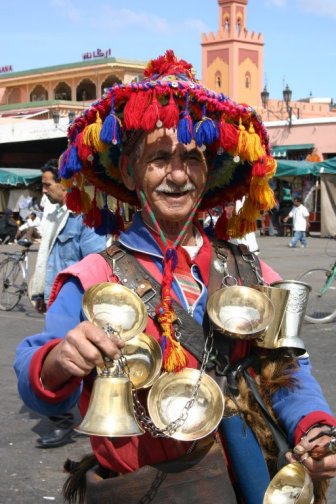
Naturally we could hardly wait to arrive
at this magical city. We were not to be disappointed."
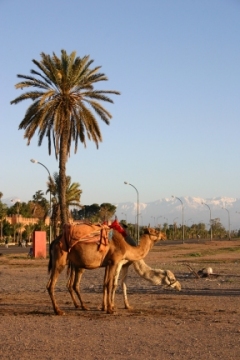
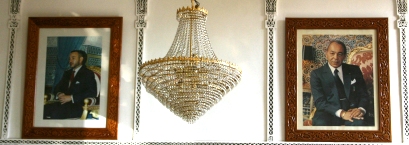
In our hotel photos of King Hassan II and, his son,
the current king, Mohammed VI
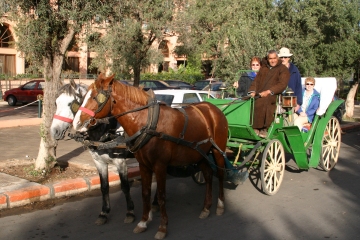
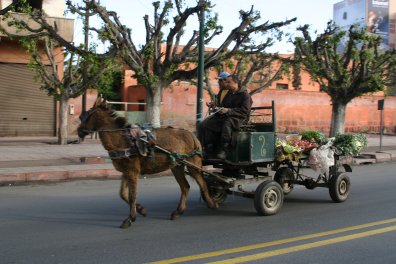
Goods are brought to market in horse drawn wagons
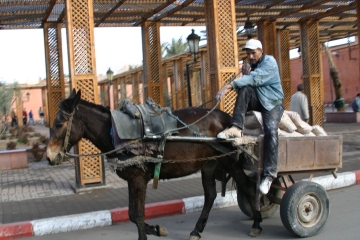
Sometimes there is only half a wagon
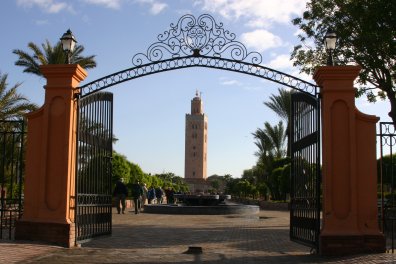
Our first stop is at the Koutoubia Mosque. We are told that the original
mosque at the this site was torn down in 1147 because the nich did not face Mecca.
The current mosque was built in 1162 by sultan Abd el-Moumen which was intended
to be the largest mosque in the western world.
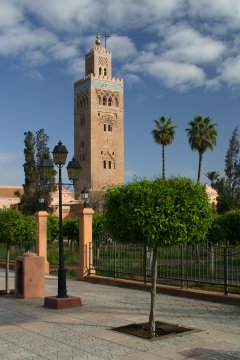
The minaret - note minarets in Morocco are square - is a masterpiece of Islamic
architecture. It is made of pink Gueliz stone and is the tallest structure in the city.
Look at the top of the mosque and notice the scaffold that looks like a hangman's galley.
Look at the picture below: In a country where attending religious services on
Friday is essential it is important to tell people what day of the week it is.
Thus a white flag is hung from this scaffold on Thursday to let everyone
know that tomorrow is Friday. It doesn't do any good to hang a flag there on
Friday because people might miss it. Thus the flag is hung one day in advance.
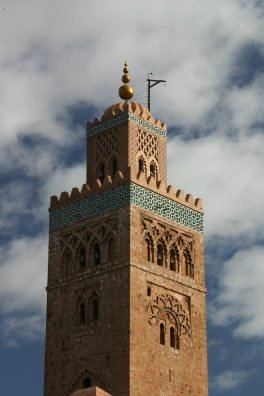
You will also notice there are four balls on top of the mosque. By tradition every mosque
has five balls on top to reflect that this is a religious site. The five balls stand for
the five tenants if Islam: 1. There is one God, Allah, and Mohammed is his prophet; 2. Pray
five times a day; 3. Observe the fast during Ramadan; 4. Make a pilgrimage to Mecca; and 5. Give to the
poor. This mosque only has four balls because the wife of the sultan violated the fast during Ramadan.
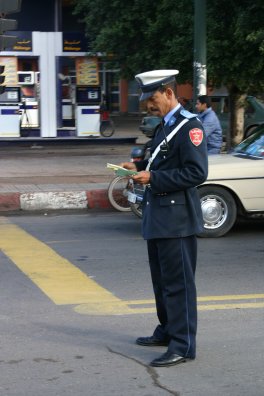
We were told that we could take pictures of everything except
the military and policemen. Opps.

This being our first day in Marrakech we are just amazed at all the
animal drawn carts bringing goods into the city market.
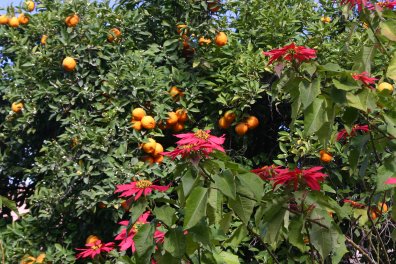
We are next taken to the Palais Bahia. While waiting in the courtyard for our
tour to start our attention is drawn to the orange trees and poinsetta flowers.
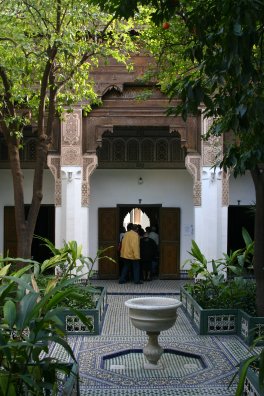
Palais Bahia means "Palace of the Favourite" and was built by two grand
viziers and was completed at the end of the 19th century.
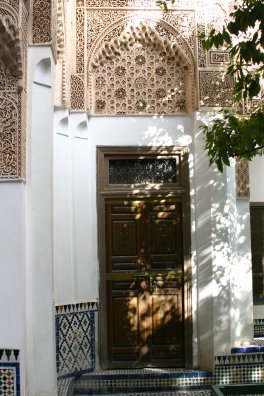
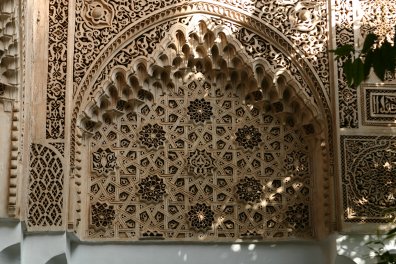
The doorways are intricately decorated with plaster.
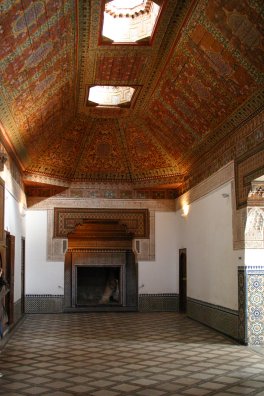
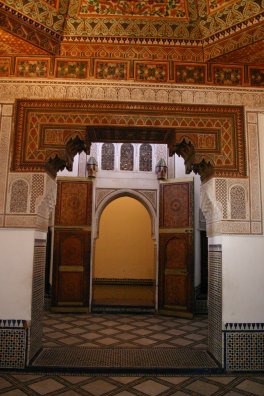
The Hall for Ambasadors is decorated with highly prized materials such as marble from Meknes,
cedar from the Middle Atlas and tiles from Tetouan. The ceiling is all inlaid cedar.
Stars on the doors represent the three major religions: Islam, Judism and Christianity.
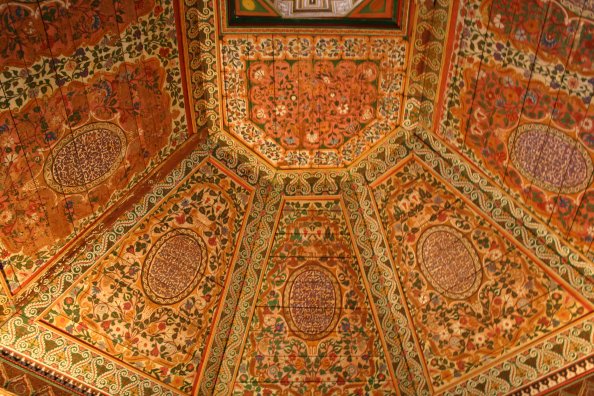
Here you can appreiciate the skilled craftsmanship which went into this ceiling.

The courtyard is paved with marbel and zellij tilework and surrounded by a
gallery of finely fluted column while three fountains stand in the center.
This is the courtyard of the viziers' concubines.
When we were in Morocco the issue of the Sultan's harem kept popping up. The
term "harem', we were told by our trip leader, means "Illegal". The harem is a
royal tradition. A Muslim is entitled to have up to four wives. The first one
who delivers a male heir becomes the first, and favorite, wife. The rule is
clear, however, you can only have more n one wife if you are able, and willing
to treat them all equally. Clearly an impossible task to anyone except the a
King or Sultan or someone else of high rank and stature. Traditionally the
Sultan was also allowed to have a harem although it is "illegal." Personally
I think Hicham made this part up. The Sultan was allowed to have sex with the
girls in his harem but if they became pregnant then they were expelled back home.
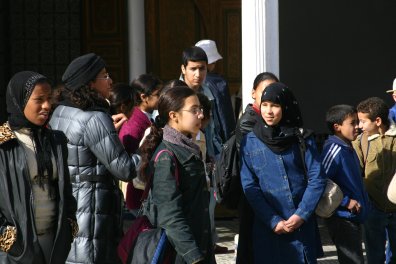
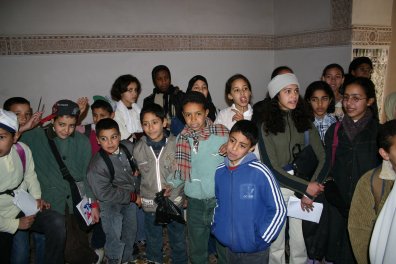
As is a universal practice, school children are brought to the Palace to learn
about their country's history. In these children were from France.
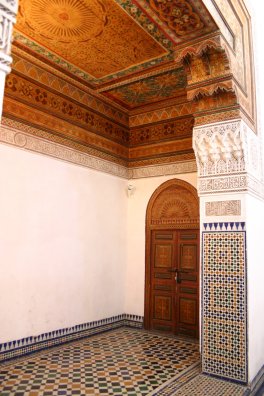
In this hall was a Koranic School. Verses in the Koran were learned by heart.
Other courses taught included mathematics and Arabic. The tutor would sit in
the middle of a circle of this students with a long which he would use to keep
the students awake. Mirrors were placed on the walls in order to reflect
light from outside into the dark room.
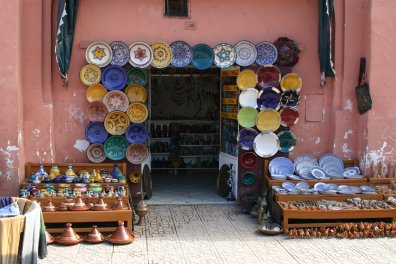
As we left the palace our eyes wandered in wonderment at all the shops.
What great surprises this city held in store for us.
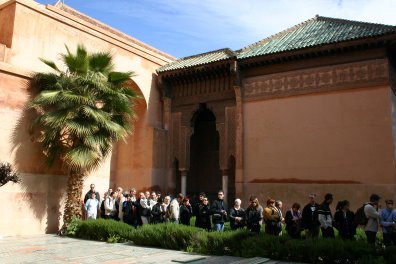
Our next stop was at the Saadian Tombs. There are two mausoleums set in
a garden planted with flowers sybolizing Allah's paradise. The tombs date
from the 16th to the 18th centrury. In respect for the dead the sultan
Moulay Ismail raised a wall around the main enterance and it was not until
1917 that the tombs were re-discovered.
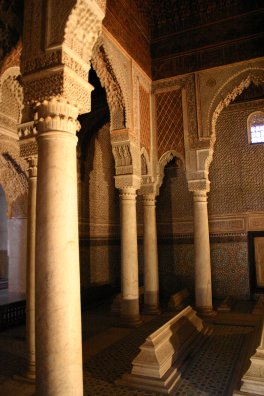
The tombs of the Saadian dynasty constitute some of the finest examples
of Islamic architecture in Morocco. You can see the white marble columns
and the arches are decorated with stalactites. Note the narrow sarcophagus;
remember, in Morocco bodies are buried on their side facing Mecca.
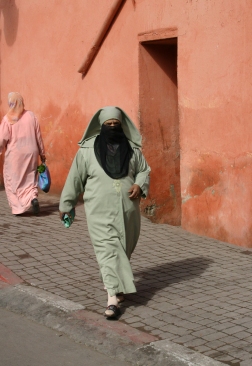
Old tribal dress codes die slowly in the city but they
are modified to fit the location

Some things don't change, men sit in the
cafes and drink their mint tea
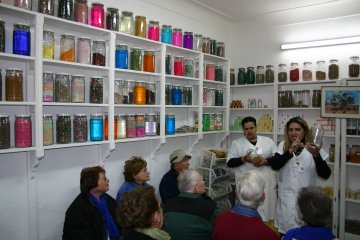
A visit to the herb shop has something to solve all
all your bodily aches and pains
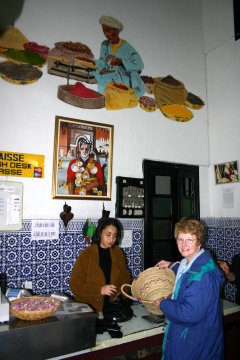
It can't hurt to try something new for problems of aging

With the Kasbah Mosque in the background we see a woman driving
her motor scooter through the marketplace.
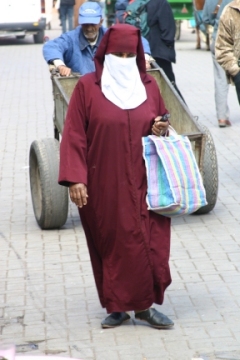
Travel is helpful to learn local customs. Some women are
covered more than others
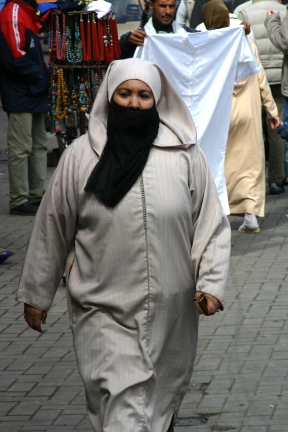
To show the nose or not to show the nose?
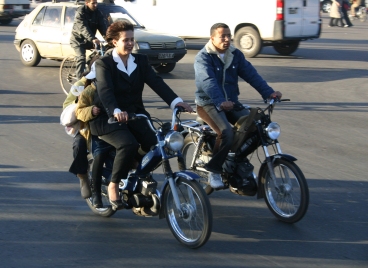
Times They Are A'Changing. No veil, no scarf, motor
bike and children.
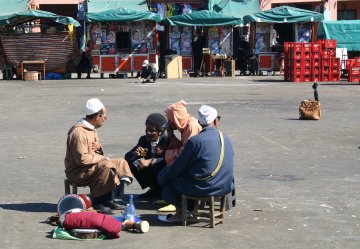
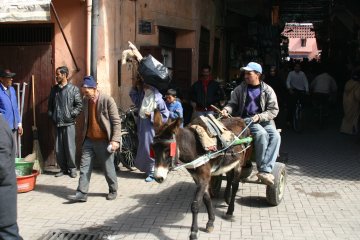
Donkeys are seen all over the souk
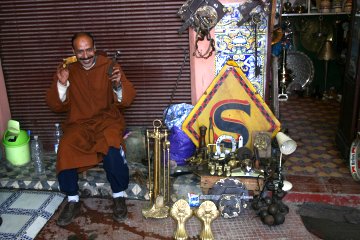
Goods of all sorts are found in the souk
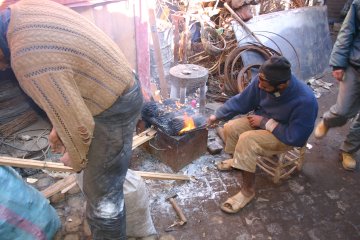
The souks is not only made up of shops, there are also
specified manufacturing areas. Here are the iron workers
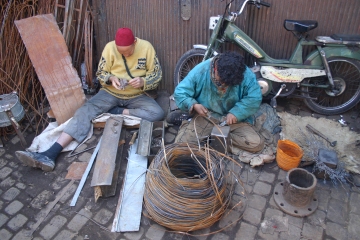
Wire is cut for decrative ironware
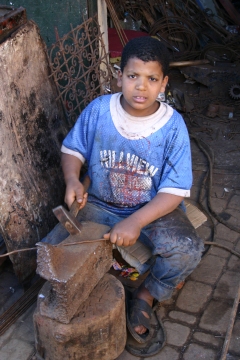
Young boys learn the trade after school
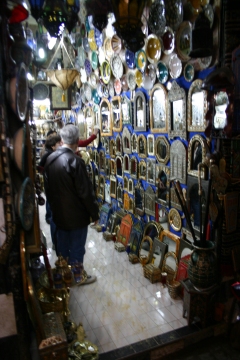
Hand crafted mirrors framed with beautiful stones
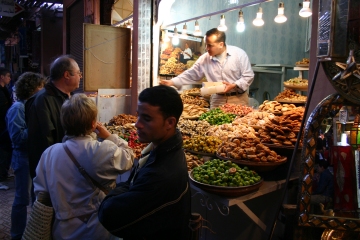
Sweet cookies and cakes for every appitite. This stall
seemed to have hundreds of flys buzzing around. On
Closer examination I saw they were honey bees. All their
sweets are smoothered in honey.
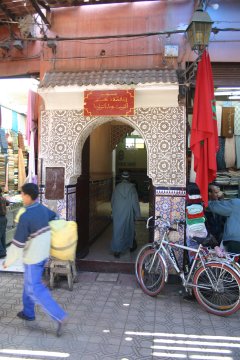
Sometimes, by just wondering around, you find a jewel.
Although non-Muslems are not allowed into the mosques I found this one
in the middle of the souk. A chanter came to the door and I watched and listened
to his melodic call to prayer. This was not a loudspeaker tape recording
but the beautiful sound of the human voice calling people to worship.
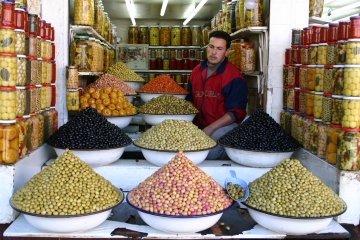
Maybe you are looking for olives. The different kinds of olives are piled up
into pyramids; there are green olives with herbs, violet-hued olives with a
sharp taste, piquant olives spiced with red peppers, olives with bitter orange,
crushed black olives that have been sun-dried and steeped in oil,
and olives for making tajine, and many other flavors.
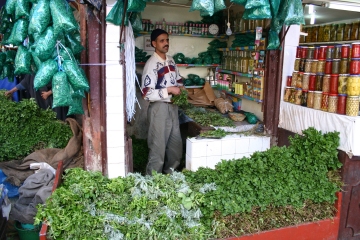
Or, fresh ment for your mint tea
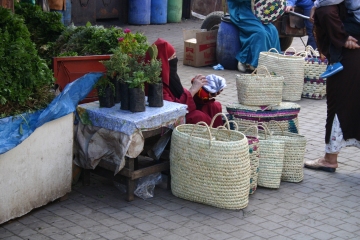
Baskets to carry your produce?
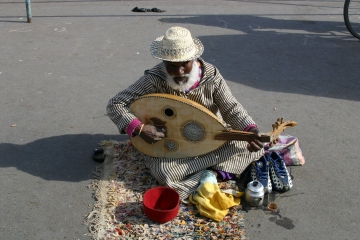
Street musicians to entertain you
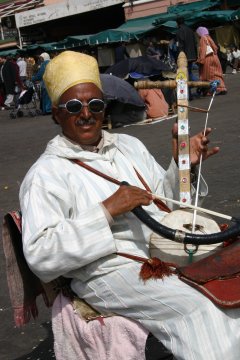
A musician from sub-Sahara Africa, maybe Mauritania,
plays his music.
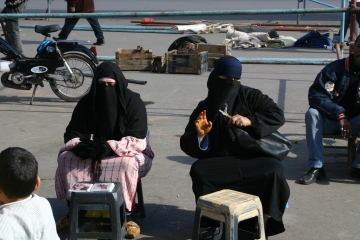
Berber women are available to paint your hands with Henna
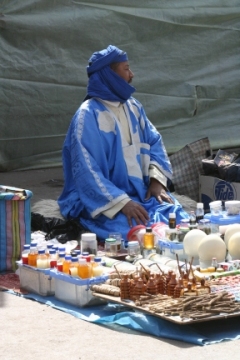
A Blue Man sells the goods he has brought across the desert
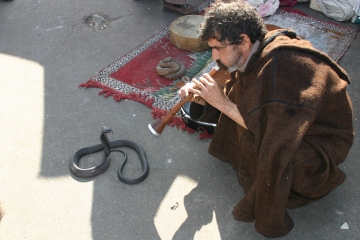
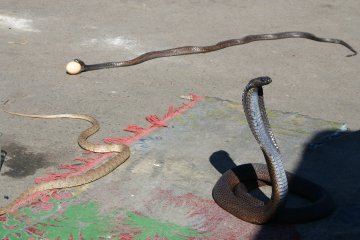
My favorite - the cobra snake charmers. Taking a picture
of street performers will cost you but they are worth every penny
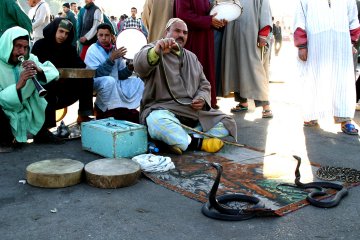
The sound of the oboe makes the snake dance.
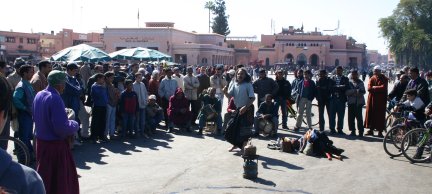
A story teller spins his yarn to the
entertainment of the crowd. Homer would fit right in.
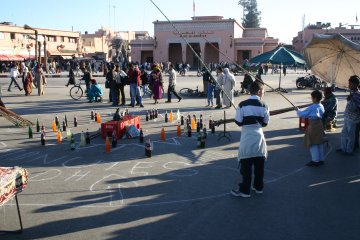
Games for the children - knock over the coke
bottle and win a prize.
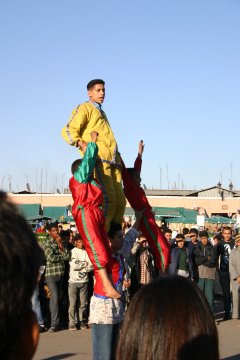
Acrobats dazzel the eye. Take a picture and you are immediately
approached by the "scout" with his hat in hand asking for a donation.
Who can deny them their due?
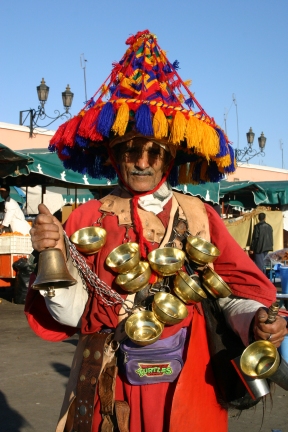
The famous watermen walk around the Jama El fna. Legend says
these men would sell water to thirsty travelers
coming into the city out of the desert.
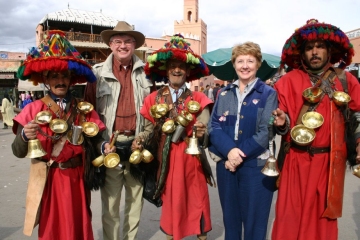
Today watermen make their living having their
pictures taken with tourists. What a treat, we loved every minute.
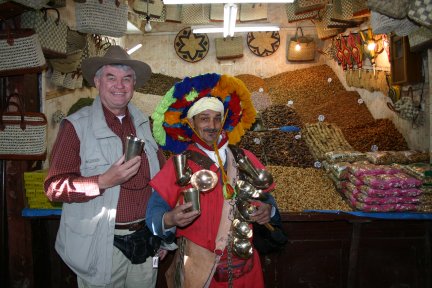
I am up early one morning, while Fran slept in, and went
to the souk to buy some "Berber coffee" (spices to add to coffee)
and ran across the waterman while I was buying some honeynuts.
At least he is up working early in the morning.
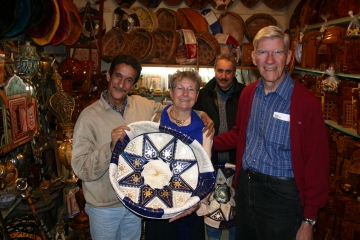
A hand tooled leather hassick is just the thing
for the living room back home
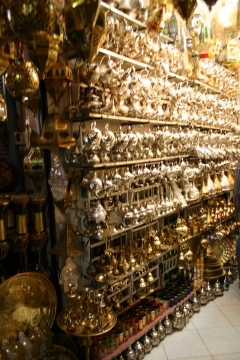
Are you looking for a brass lamp that maybe holds a Genie?
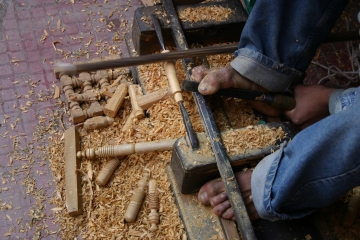
Putting his feet to work this young man
"hand carves" handles for shisk kabob squewers
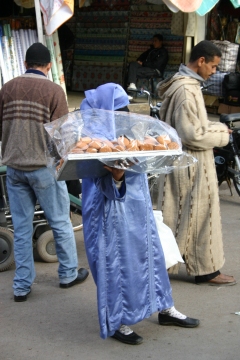
If you get hungry you can always buy a cookie
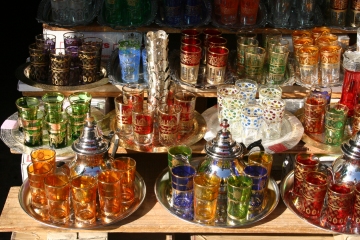
Colored glasses, just like those used for mint tea. I can't pass
up this bargain. What color do I need? As soon as I bought my glasses
the boy in the stall next to me asked how much they cost. He said he
would have sold them to me for $1. Obviously intending to make me feel bad.
So, I offered to buy another set from him but then it was no deal.
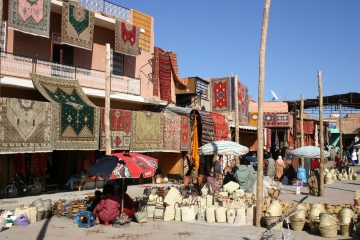
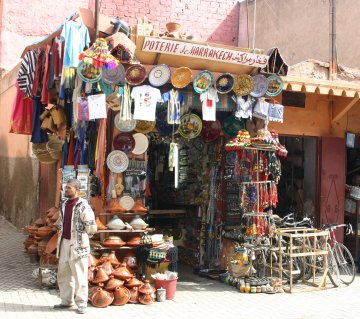
Some shops carry a little bit of everything
and other shops specialize in one particular item.
It all depends on what you are looking for.
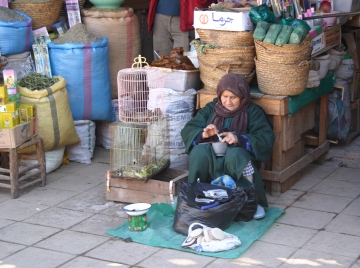
Perhaps you want a bird for your house?
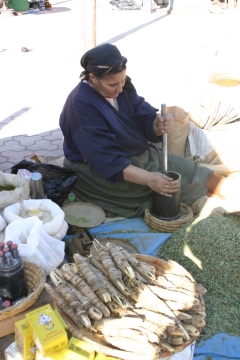
Herbs were for sale everywhere.
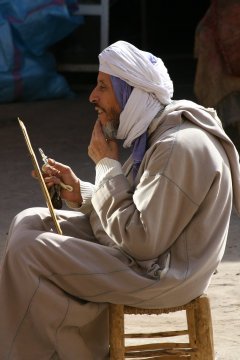
A gentleman trims his beard.
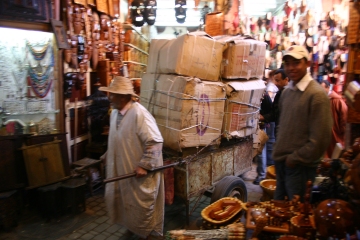
No room for motorized delivery vehicles in the souk.
Everything is delivered by hand.
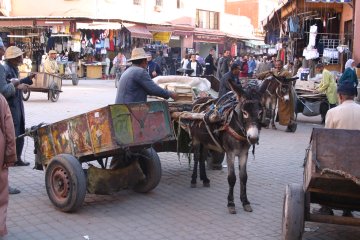
Or if you are lucky you have a donkey.
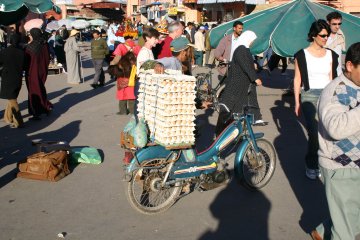
Eggs can be delivered on the back of a motorbike.
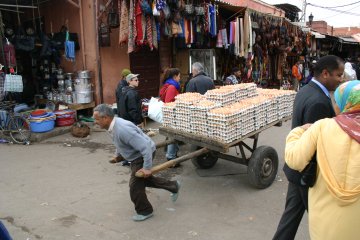
Or, your eggs can be piled up and
pulled through the market by hand.
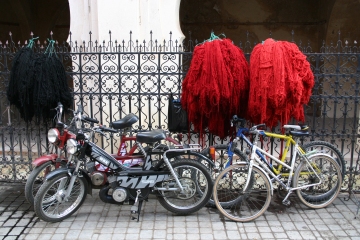
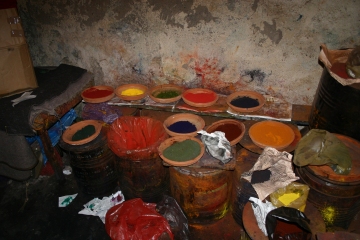
T
he next thing I know I am given a guided
tour through the yarn dying section of the souk.
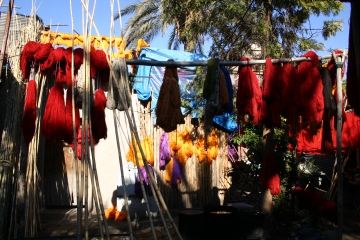
Yellows and orange and blue yarn sparkle in the sun.
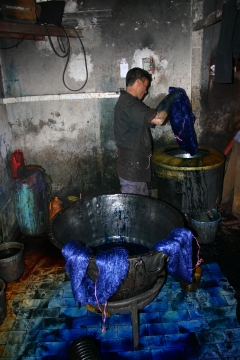
Blue dye makes blue yarn and hands and arms and feet.
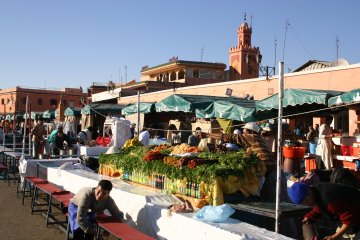
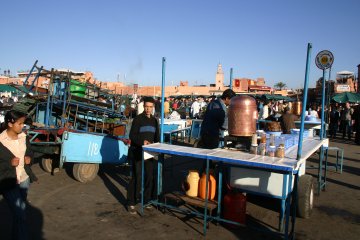
Chairs, tables, cooking facilities, everything is brought in.
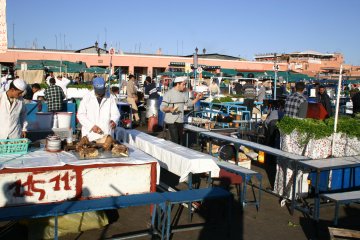
Tables and benches where customers sit and eat their meal.
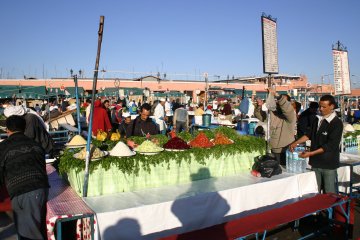
Appitizing Food is desplayed to draw hungry patrons.
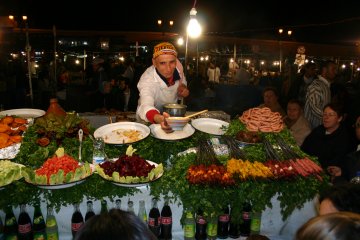
Our guide told us he was taking us to a surprise location
for dinner. We had no idea what was in store.
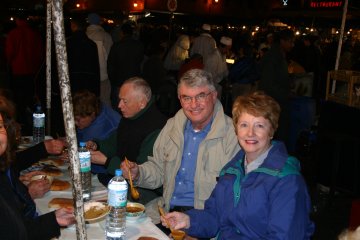
We are provided wooden spoons to eat the gulosh.
I'm not sure what the Dept of Health would say about
these facilities but it was good and no one got sick.
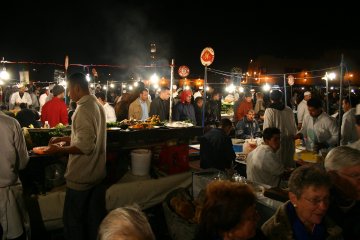
Food is laid out display the specialties
and lure the customers in for a meal.
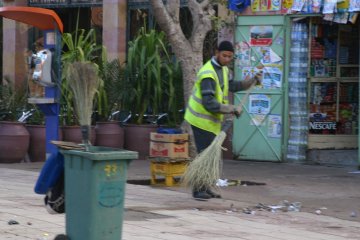
Of course someone always has to clean up the following morning.
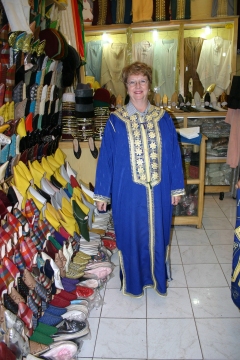
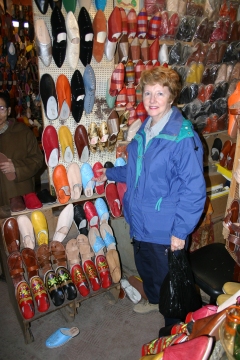
Cherbils, velvet slippers embroidered with gold
treat, curved and with pointed toes are an
essential part of a woman's feast-day dress.
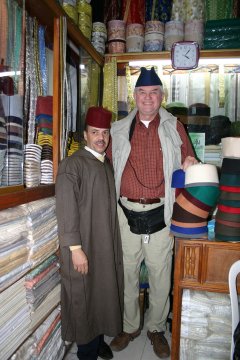
On the shoping spree I bought a hat.
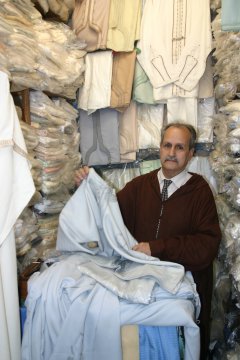
I purchase the shirt and pantaloons which
are worn under the jellaba.
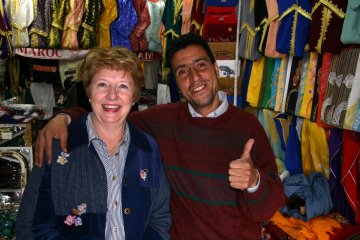
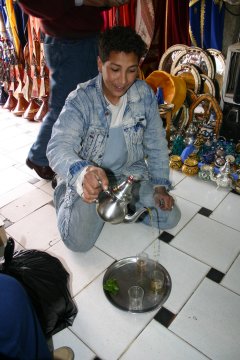
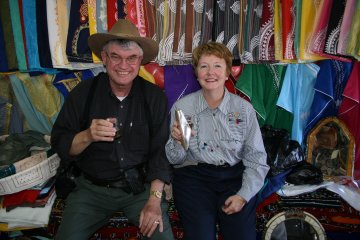
We were each served a glass of refreshing mint tea.
Fran was served her tea in a shoe sho she wouldn't burn
her delicate fingers.
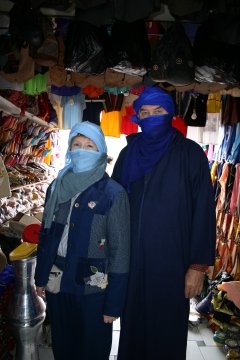
I told our host I was looking for a blue jellaba to wear to our party.
The boy was sent out running and came back with several colors. He was
sent out again and again until he came back with the right size.
We were shown how to wrap a scarf around our heads and make a veil
to cover our faces. We could have been mistaken for Blue Men.
What a wonderful afternoon and we returned to our hotel with sacks of
treasures and our wallets a great deal lighter.
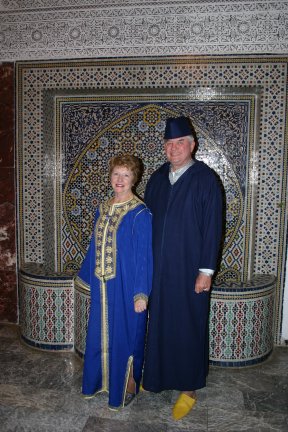
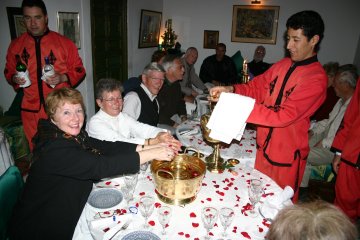
We first wash our hands in rose scented water.
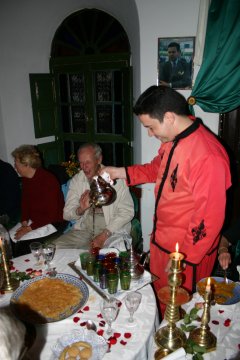
Naturally, mint tea for everyone.
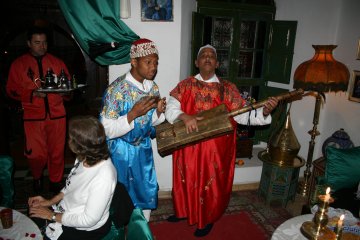
We are then treated to music performed by
the Gnaoua. The Gnaoua are musicians descended from black brotherhoods
of slaves transported from Mali, Guinea, and Ghana to act as guards for
the sultan Moulay Ismail in Meknes.
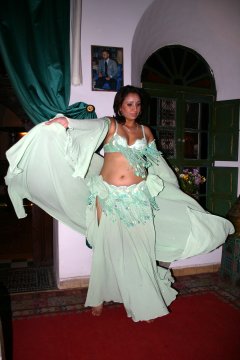
And the evening ends with a lively
belly dancer.

Belli at the Grand Titons, June 2015